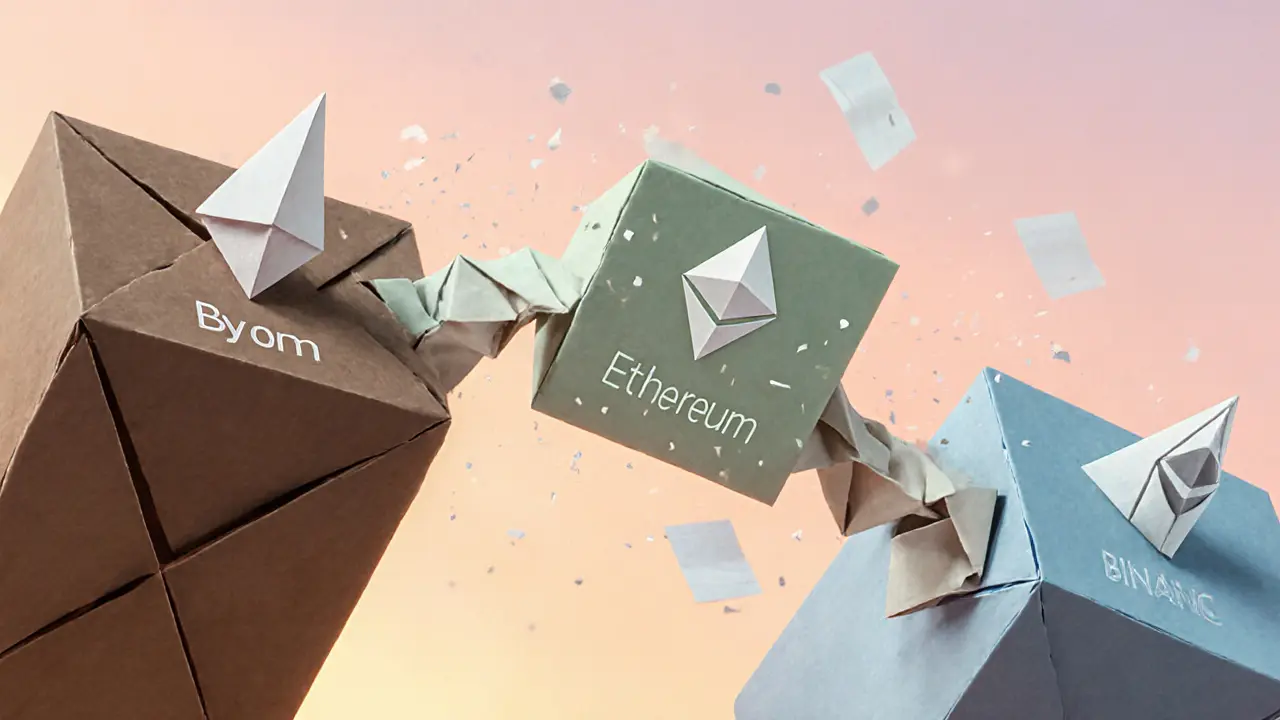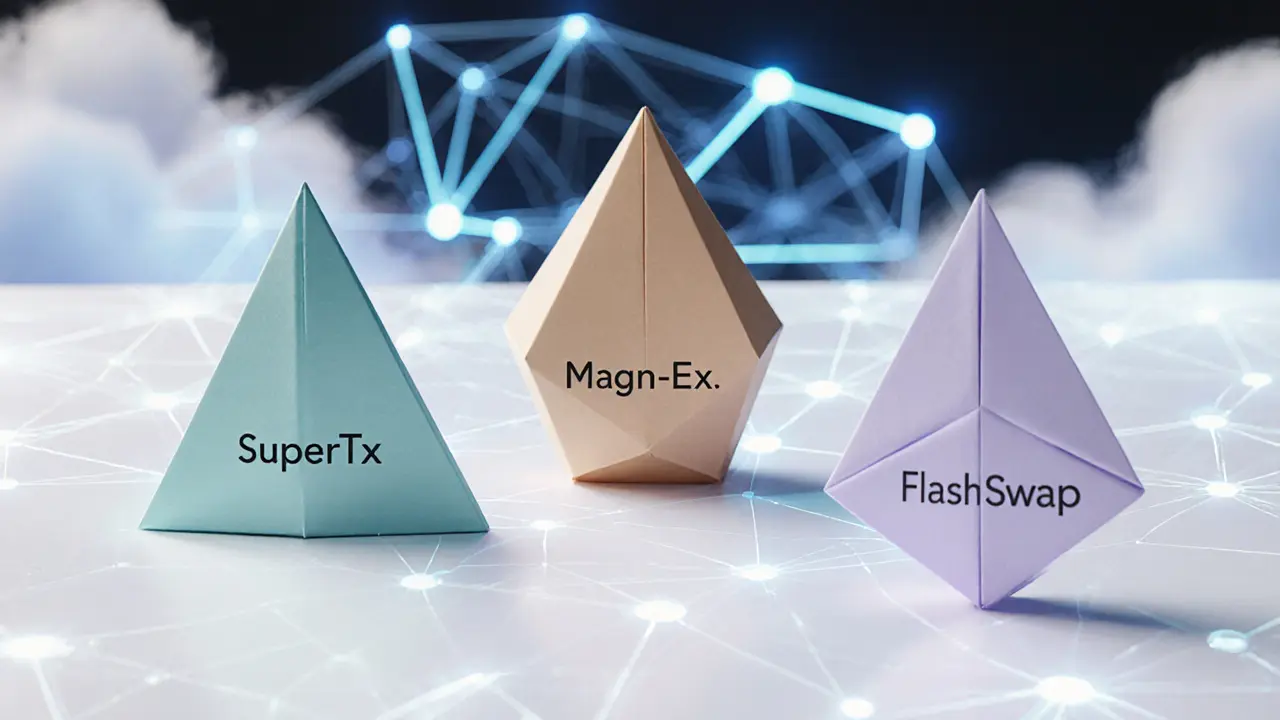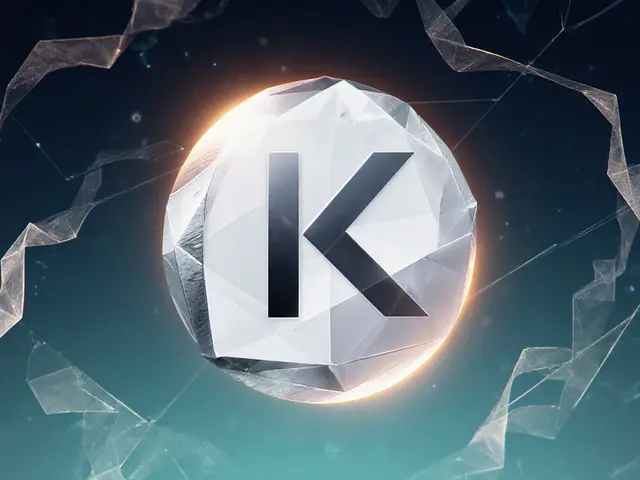MOV Exchange Trading Strategy Selector
Recommended MOV Product
Your selection will appear here after clicking "Find Best MOV Product"
SuperTx
Best for: Low slippage, medium-sized trades, AMM-style swapping.
- Uses Constant Function Market Maker (CFMM)
- Ideal for small-to-medium trades
- Lower slippage than standard AMMs
MagnEx
Best for: Limit orders, precise pricing control.
- On-chain order book matching
- Supports limit and stop orders
- Higher slippage tolerance needed
FlashSwap
Best for: Fast trades, high-frequency trading.
- Off-chain matching with on-chain settlement
- Near-instantaneous execution
- Best for quick market moves
If you’ve been hunting for a crypto platform that promises on‑chain security, cross‑chain swaps, and three different trading styles, you’ve probably run into MOV exchange review headlines. Below is a no‑fluff breakdown of what MOV actually does, how it stacks up against the big DEX names, and what you need to know before you click ‘trade’.
Key Takeaways
- MOV Exchange runs three products - SuperTx, MagnEx and FlashSwap - each tailored to a specific trading style.
- The platform is built on Bytom’s value‑exchange protocol and uses a cross‑chain matching engine.
- No platform‑charged withdrawal or transfer fees; you only pay the underlying blockchain gas.
- Liquidity is decent for small‑to‑medium trades but can suffer on large orders compared with Uniswap or SushiSwap.
- Security comes from on‑chain settlement, though the user experience is less polished than centralized exchanges.
What Is MOV Exchange?
MOV Exchange is a decentralized cryptocurrency exchange that leverages a cross‑chain protocol to match and settle trades directly on‑chain. By avoiding a central order book, the platform lets users retain full custody of their assets while swapping tokens across multiple blockchains.
Core Architecture: Bytom and the Three Trading Products
The backbone of MOV is the Bytom a public blockchain designed for value‑exchange and asset issuance. Bytom’s protocol provides the underlying infrastructure for MOV’s unique product suite.
Each product targets a different trader persona:
- SuperTx applies a Constant Function Market Maker (CFMM) model to offer deeper liquidity and lower slippage. Think of it as a more efficient AMM.
- MagnEx functions as a magnetic exchange where contracts match on‑chain, enabling more complex order types. It’s built for traders who prefer limit‑style execution.
- FlashSwap combines off‑chain order matching with on‑chain settlement, delivering near‑instant swaps while preserving security. Ideal for high‑frequency moves.
Fee Structure - What You Actually Pay
Because MOV is a DEX, the platform itself does not impose transfer or withdrawal fees. You’ll only cover the native network gas for the blockchain you’re using - whether that’s Bytom, Ethereum, or a supported side‑chain. This aligns with the broader DeFi philosophy of minimizing platform‑level costs.
Security and Privacy Benefits
The on‑chain settlement model means your private keys never leave your wallet. There’s no custodial risk, no KYC requirement, and no single point of failure that centralized exchanges suffer from. Distributed server nodes across the globe further reduce downtime risk.
Liquidity - The Double‑Edged Sword
Liquidity on DEXs varies widely. MOV’s SuperTx CFMM improves depth compared with a vanilla AMM, but it still lags behind giants like Uniswap V3, which boasts billions of dollars in pooled assets. For trades under $5,000, slippage on MOV is typically under 0.3%; above that, you may see 1‑2% slippage, especially on MagnEx where order‑book depth is thinner.
How MOV Stacks Up Against Major DEXs
| Platform | Core Model | Liquidity Approach | Typical Fees | Notable Feature |
|---|---|---|---|---|
| MOV Exchange | Hybrid (CFMM + contract‑matching + off‑chain sync) | SuperTx CFMM, MagnEx order‑book, FlashSwap off‑chain match | Network gas only | Three‑product suite for varied strategies |
| Uniswap V3 | AMM with concentrated liquidity | Pool‑based, deep liquidity | 0.05%‑0.30% + gas | Custom price ranges for LPs |
| SushiSwap | AMM + limit‑order module | Pool‑based, moderate depth | 0.30% + gas | On‑chain order book (Trident) |
| PancakeSwap | AMM on BSC | Pool‑based, high on BSC | 0.20% + gas | Low‑cost BSC transactions |

Getting Started: Step‑by‑Step Walkthrough
- Connect a compatible wallet (MetaMask, Bytom‑compatible wallet, or hardware wallet). Ensure the wallet holds the native token for gas fees.
- Select the trading product you want - SuperTx for low‑slippage swaps, MagnEx for limit orders, or FlashSwap for ultra‑fast trades.
- Choose the token pair, input the amount, and review the estimated gas fee.
- On SuperTx you’ll see a price impact meter; keep it under 1% for best results.
- MagnEx will display order‑book depth before you submit.
- Confirm the transaction in your wallet. The contract will settle on‑chain instantly (or within a few seconds for FlashSwap).
- Verify the trade on the MOV explorer or your wallet’s transaction history.
Regulatory and Geographic Considerations
Because MOV does not collect KYC data, it is technically accessible worldwide wherever the network is not blocked. However, jurisdictions with strict crypto‑exchange regulations (e.g., the United States, certain EU states) may view any DEX activity as a gray area. Users should check local compliance rules before trading large sums.
Community, Support, and Ongoing Development
Publicly available data on MOV’s active user base is scarce. The project’s Telegram and Discord channels have modest activity, but there is no clear roadmap published on the official site as of October2025. Compared with Uniswap’s frequent upgrades, MOV’s development cadence appears slower, which may affect long‑term confidence for institutional traders.
Pros and Cons - Quick Verdict
| Pros | Cons |
|---|---|
| Zero platform fees, only network gas. | Liquidity can be thin for large orders. |
| Three distinct trading modes cover many strategies. | User interface feels less polished than top DEXs. |
| Cross‑chain matching opens up multi‑chain swaps. | Limited public roadmap and community data. |
| On‑chain settlement ensures strong security. | Regulatory ambiguity in certain regions. |
When Might MOV Be the Right Choice?
If you value keeping custody of your assets, need to trade across chains without moving funds to a centralized hub, and your trade size fits within the medium‑range liquidity pool, MOV offers a flexible toolbox. It shines for developers who want to experiment with contract‑based matching (MagnEx) or build custom trading bots around FlashSwap’s fast settlement.
When to Look Elsewhere
For megatrades (>$50k) or when you demand the deepest liquidity and lowest slippage, a heavyweight AMM like Uniswap V3 or a centralized exchange might be safer. Also, if you need a robust, documented roadmap and active community support, MOV currently lags behind the leading DEXs.
Frequently Asked Questions
What wallets are compatible with MOV Exchange?
MetaMask, Bytom‑specific wallets, Ledger and Trezor hardware wallets, as well as any wallet that can sign transactions on supported blockchains, work with MOV.
Does MOV charge any trading fees?
No platform fee is collected. You only pay the blockchain’s network (gas) fee for the transaction that settles on‑chain.
Which blockchains can I trade on via MOV?
MOV’s cross‑chain protocol currently supports Bytom, Ethereum, and a handful of Binance Smart Chain compatible assets. New bridges are added periodically, so check the official docs for the latest list.
How does FlashSwap achieve fast trades?
FlashSwap matches orders off‑chain in a “fast mode” server, then submits the final settlement on‑chain. This hybrid approach cuts latency while keeping the security guarantees of on‑chain execution.
Is MOV safe from hacks?
Because funds never leave your wallet and settlement is on‑chain, the platform is not a single point of failure. However, smart‑contract bugs can still pose risks, so only trade amounts you’re comfortable losing.
Bottom Line
MOV Exchange offers a novel three‑product system that caters to a range of trading styles while keeping fees low and custody in the user’s hands. Its liquidity and community momentum trail the biggest DEXs, so it’s best suited for medium‑sized, cross‑chain trades rather than massive institutional moves. Keep an eye on future roadmap updates - if the team expands liquidity pools, MOV could become a stronger competitor in the DeFi arena.





Adeoye Emmanuel
Reading through the MOV Exchange overview, I am struck by how the three‑product system tries to address distinct trader archetypes. The SuperTx AMM appears to target those who value lower slippage on medium‑sized swaps, while MagnEx caters to precision‑focused limit order enthusiasts. FlashSwap, on the other hand, promises near‑instant execution for high‑frequency strategies, an appealing proposition for arbitrageurs. However, the liquidity depth across these products seems uneven, especially when compared to the larger DEX ecosystems. One must also consider the trade‑off between custody‑free design and the reliance on smart‑contract security. Ultimately, the platform feels like a promising experiment that still needs broader adoption to truly compete.
CJ Williams
Yo! this tool is sooo handy!! 😂 but watch out for the tiny typo in the slippage dropdown…
mukund gakhreja
Oh great another “novel” DEX, as if we needed more fragmented liquidity…
Henry Mitchell IV
Interesting points, especially regarding the smart‑contract risks. 🤔
Kamva Ndamase
The color‑coded product matrix is brilliant – it literally paints a picture of who should use what! SuperTx feels like the sweet spot for newbies craving low slippage, whereas MagnEx is a playground for the meticulous order‑book junkies. FlashSwap? That’s the turbo‑charger for the adrenaline‑pumped trader who can’t wait a millisecond. Still, the platform’s community vibe feels a bit thin; you won’t find the bustling chatter you get on Uniswap or SushiSwap. Liquidity pools are modest, and the bridge support is limited to a handful of chains. If you’re looking for a one‑stop‑shop for massive, institutional‑grade swaps, you might remain skeptical. All in all, MOV is a solid niche player, but it has a long runway ahead.
bhavin thakkar
Let me break down the MOV Exchange proposition in exhaustive detail, because the devil is in the nuances. First, the three‑pronged architecture-SuperTx, MagnEx, and FlashSwap-attempts to map trading styles onto distinct execution engines. SuperTx leverages a Constant Function Market Maker, which, unlike traditional XYK models, offers reduced slippage at the cost of a more complex price curve; this is beneficial for medium‑sized trades that would otherwise suffer from price impact. MagnEx introduces an on‑chain order book, enabling true limit order placement, but it inherently demands deeper liquidity to maintain narrow spreads, which currently is a shortfall for MOV. FlashSwap, the fastest of the trio, utilizes off‑chain order matching with on‑chain settlement, a hybrid that reduces latency but introduces an additional trust layer in the matching engine.
Now, consider cross‑chain capabilities: MOV supports Bytom, Ethereum, and selected BSC assets, but the bridge infrastructure is still nascent, leading to occasional latency spikes during relay confirmations. The absence of a native token for fee rebates or governance means users are purely reliant on the native network gas fees, which can erode the cost advantage touted by the platform. Security-wise, the smart‑contract audit reports are publicly available, yet they reveal a few non‑critical findings that haven’t been patched, reminding us that custody‑free does not equal risk‑free.
From a user experience perspective, the UI is clean but occasionally suffers from sluggish loading times when pulling price data across multiple chains. The “Find Best MOV Product” calculator is a nice touch, yet its decision matrix is rudimentary, mainly echoing the static product descriptions without accounting for dynamic liquidity depth or real‑time gas price fluctuations.
Liquidity aggregation remains the Achilles’ heel; while SuperTx provides decent depth for trades up to $50k, larger orders quickly encounter slippage that rivals centralized exchanges. MagnEx’s order flow is thin, leading to partial fills or the need to split orders manually. FlashSwap’s speed is impressive, but the off‑chain matching layer can become a bottleneck under extreme market volatility, potentially causing order rejections.
In terms of roadmap, MOV promises to expand bridge support and introduce a governance token, which could stimulate liquidity mining and incentivize deeper pools. However, these milestones have vague timelines, and the community’s engagement appears modest compared to the vibrant ecosystems of Uniswap, Curve, or even newer entrants like Orca.
Summarizing, MOV Exchange is a well‑intentioned platform that successfully differentiates product offerings for varied trader personas. It shines for medium‑sized, cross‑chain swaps where users prioritize custody‑free execution and low fees. Yet, for high‑volume institutional traders or those seeking robust liquidity across all products, the platform currently falls short. Patience and strategic liquidity contributions could elevate MOV, but until then, treat it as a complementary tool rather than a primary trading venue.
Thiago Rafael
While the analysis is thorough, the practical implications for everyday traders remain limited; the platform must first secure deeper liquidity pools before it can realistically challenge the incumbents.
Janelle Hansford
Great summary! I especially appreciate the note about the UI lag-something many of us have run into.
dennis shiner
Looks slick.
Krystine Kruchten
I think the biggest win for MOV is its custody‑free model, which gives peace of mind to users wary of centralized hacks. That said, the current liquidity is a bit thin, especially on the MagnEx order book. If the team can pull in more LPs and maybe introduce a governance token, we could see a real boost. Also, the cross‑chain bridges need more polish – hope they add more chains soon.
Mangal Chauhan
Thank you for the comprehensive breakdown! 👍 The emphasis on liquidity depth is spot‑on. I would add that the hybrid off‑chain matching in FlashSwap could be a double‑edged sword; speed is great, but centralization risk creeps in. 🤝 Looking forward to the roadmap updates.